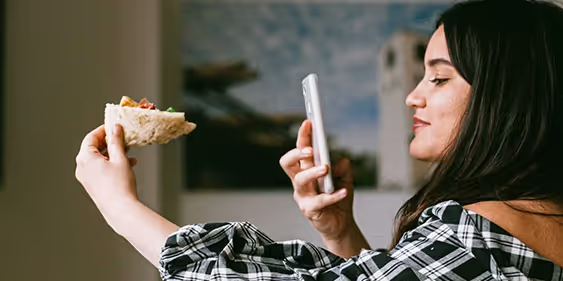

Influencer marketing is consistently evolving, from algorithm changes to new platforms to hiding like counts. Therefore, at the beginning of the coronavirus pandemic, it came as no surprise that there were changes to the influencer landscape. The coronavirus pandemic led to changes in influencers’ ability to make content. Travel influencers were no longer able to travel, lifestyle influencers were no longer able to go outside freely, and so on. The change in the ability to create content led to influencers creating different types of content, less perfectly staged and more authentic, and through the other side of the screen, followers were dealing with the same struggles and changes.
The pandemic did not slow the growth of influencer marketing, it became essential. The necessity to break through the crowded social environment is more important than ever. During this pandemic, more people are on their phones and social media looking to connect in a safe way. And as a result, brands have turned to influencers to be where their consumers are in a meaningful way.
When brands collaborated with influencers during the height of the pandemic, they made sure to make necessary changes to messaging and call to actions as consumer behavior dramatically changed, such as an increase in online shopping.
Here’s an example of an influencer we saw adapt her brand partnership messaging and choice. Jamie Chung, who partnered with Madewell and Parachute Home for loungewear made her content fit with what consumers were shopping for. She also donated her earnings to the NYC coronavirus relief fund, which showed sensitivity and awareness to the pandemic and its effects.
Although consumer behavior is once again changing as many cities are opening up, not everyone is going back to their old behaviors and shopping habits.
Additionally, photoshoots were nearly impossible to execute, so brands also used influencers as content creators for brand-owned content. Influencers were able to create this content quickly while being cost-effective.
Throughout the pandemic, there’s been a connection between influencers and followers that is closer than before. Everyone is struggling with the same issues – not being able to see family, anxiety about getting sick, homeschooling, new schedules, home dynamics and more. From our perspective, the pandemic has strengthened the bond between influencers and their followers. We believe followers will want to maintain this strengthened bond post-pandemic.
In a late 2019 study, 63% of marketers planned to increase their 2019 influencer marketing budgets in 2020. I have no doubt marketers will again increase their influencer marketing budgets for 2021, even as influencer marketing continues to evolve.
The coronavirus pandemic definitely shook up the influencer marketing landscape and we’ll continue to see brands adapt to the changing environment. As the environment changes, we’ll continue to keep our finger on the pulse.
Our clients have continued to work with influencers throughout the pandemic and will continue to do so post-pandemic. If you’re looking to work with influencers for the first time or need help navigating the constantly-changing influencer marketing landscape, contact us!